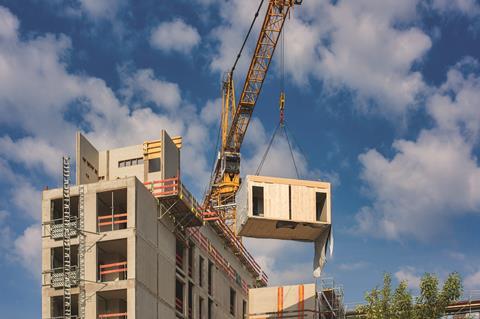‘Modern’ methods of construction (MMC) have been the next big thing for building houses since the Romans or earlier.

While most leading housebuilders have been sceptical about claims that factory-built homes would supercharge their output and profitability, MMC’s day may finally have arrived thanks to Covid, Brexit and sustainability.
The arguments in favour of offsite production have been well rehearsed: fully fitted houses can be delivered on a couple of lorries then bolted together on site in a matter of days; there is greater quality control and less reliance on bands of subcontractors; wastage is minimised. Less time building homes should improve the key metric of return on capital employed.
Very little of this seems to have persuaded the biggest housebuilders in the past. Modular homes were usually more expensive and not necessarily much faster to build. Shareholders have been richly rewarded by modular house builders that are rolling out fewer than a house a week per site. Moreover, some developers have had costly dalliances with in-house manufacturing. These include Barratt, Redrow and Laing O’Rourke’s Explore manufacturing.
But most of the resistance appears to have evaporated in the past few months. I have seen evidence that manufacturers’ order books have risen appreciably, initially from housing associations (under some pressure from an MMC-obsessed government), but now with a wave of incoming enquiries from leading builders.
The main catalyst has not so much been material cost inflation but this year’s shortages and delays impacting both materials and labour.

The manufacturers I’ve talked to face similar challenges but, as bulk buyers, they have more clout with their suppliers than subcontractors trying to secure small orders of specified bricks or lintels at Jewson.
For housebuilders, the key concern is certainty that customers are moving in on time and not spending months complaining to daytime TV about shoddy finishing. The avoidance of risk has moved sharply up the agenda.
Especially for the quoted developers, environmental, social and governance (ESG) criteria have become Holy Writ. Greater control in manufacturing and transport and less wastage help the ‘E’; training workforces for new factories, many in former ‘red wall’ areas, arguably help with the ‘S’ and ‘levelling up’, while offsetting swathes of workers returning to the EU; and I’m not sure what companies can attribute to the ‘G’, but I’m sure some will try.
As to the techniques on offer, it’s even more confusing than the days of VHS versus Betamax and (showing my age) Philips’ Video 2000. There are two main concepts: ‘volumetric’ (3D boxes and roofs, largely fitted inside and with or without external cladding, which are bolted together on site) and panelised (2D, essentially flat pack).
The main materials for both are a choice of timber, concrete or differing grades of steel. All permutations appear to have their pros and cons, depending on building type and height.
Who’s who
The main runners and riders have powerful backers. These include volumetric producers: ilke Homes (steel), financially backed by private equity and Homes England; Urban Splash (timber), in joint venture with Japanese giant Sekisui House; insurance giant and now multi-tenure housing provider L&G (now steel, after a long gestation based on cross laminated timber – which has been undermined by combustibility concerns); and TopHat (timber), with the financial heft of Goldman Sachs.
The most automated production facilities are those of Berkeley Group (steel).
Explore (concrete) and Countryside Properties (timber) look like the most advanced of the 2D brigade, while Skanska-IKEA tie-up BoKlok and Future-Built are developing innovative approaches with ambitious growth strategies.
Most of the above are still struggling to make profits, but higher output should lead to better overhead recovery. For now, MMC favours rental (social or private) where a greater take up by occupants means better cashflow. But the equation could quickly move to homes for sale. Prices of units should fall with greater economies of scale; in fact, it now looks cheaper in the South East, where traditional labour is more expensive.
As possibly the planet’s last buyer of a Betamax, I’m innately conscious about technical redundancy. This looks like less of an issue and on some larger, multi-company sites a mix-and-match approach could be followed. There should be rapid evolution and adaptability. It’s been a long time coming.
Alastair Stewart is an equities analyst and consultant






























No comments yet